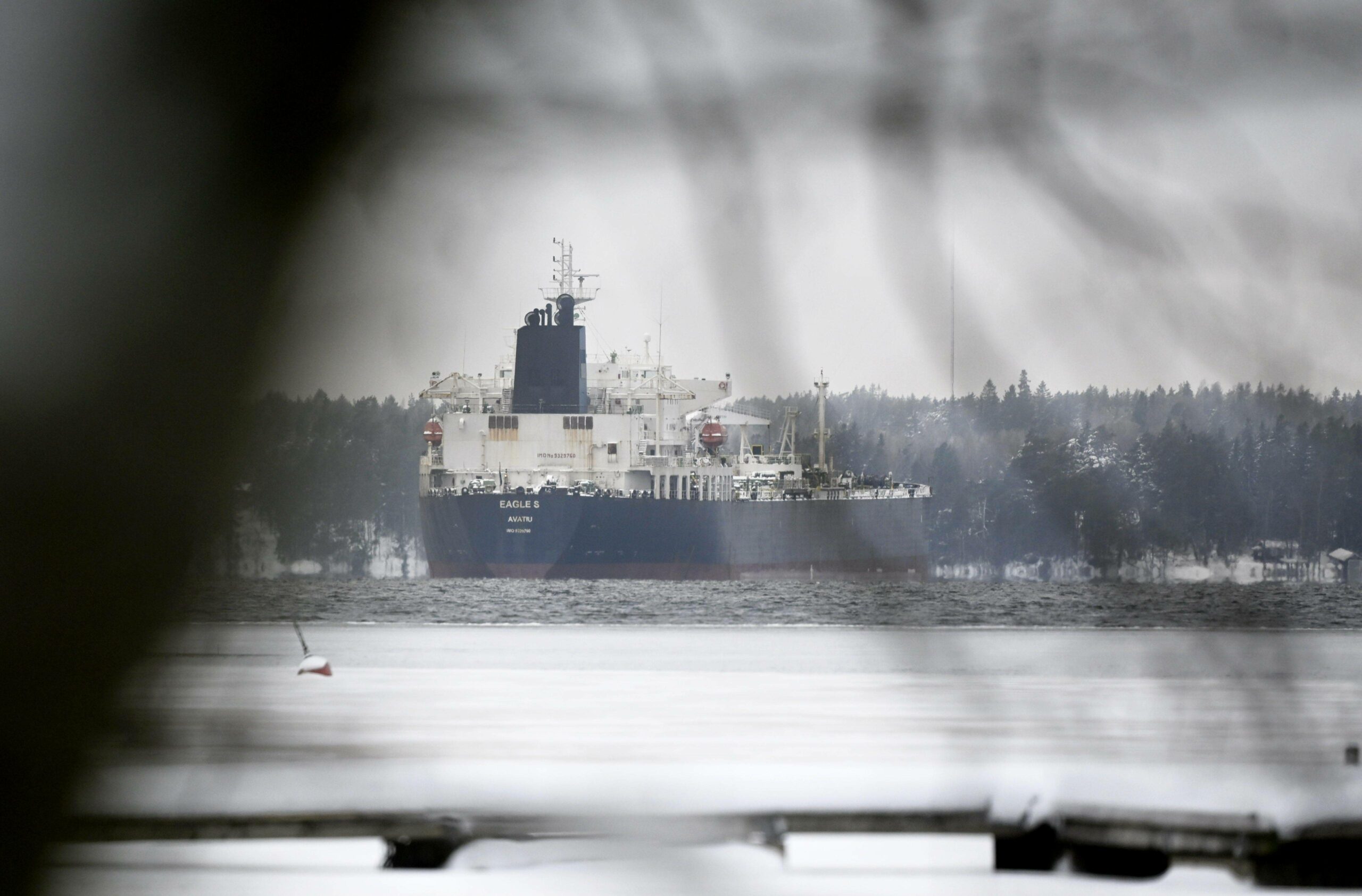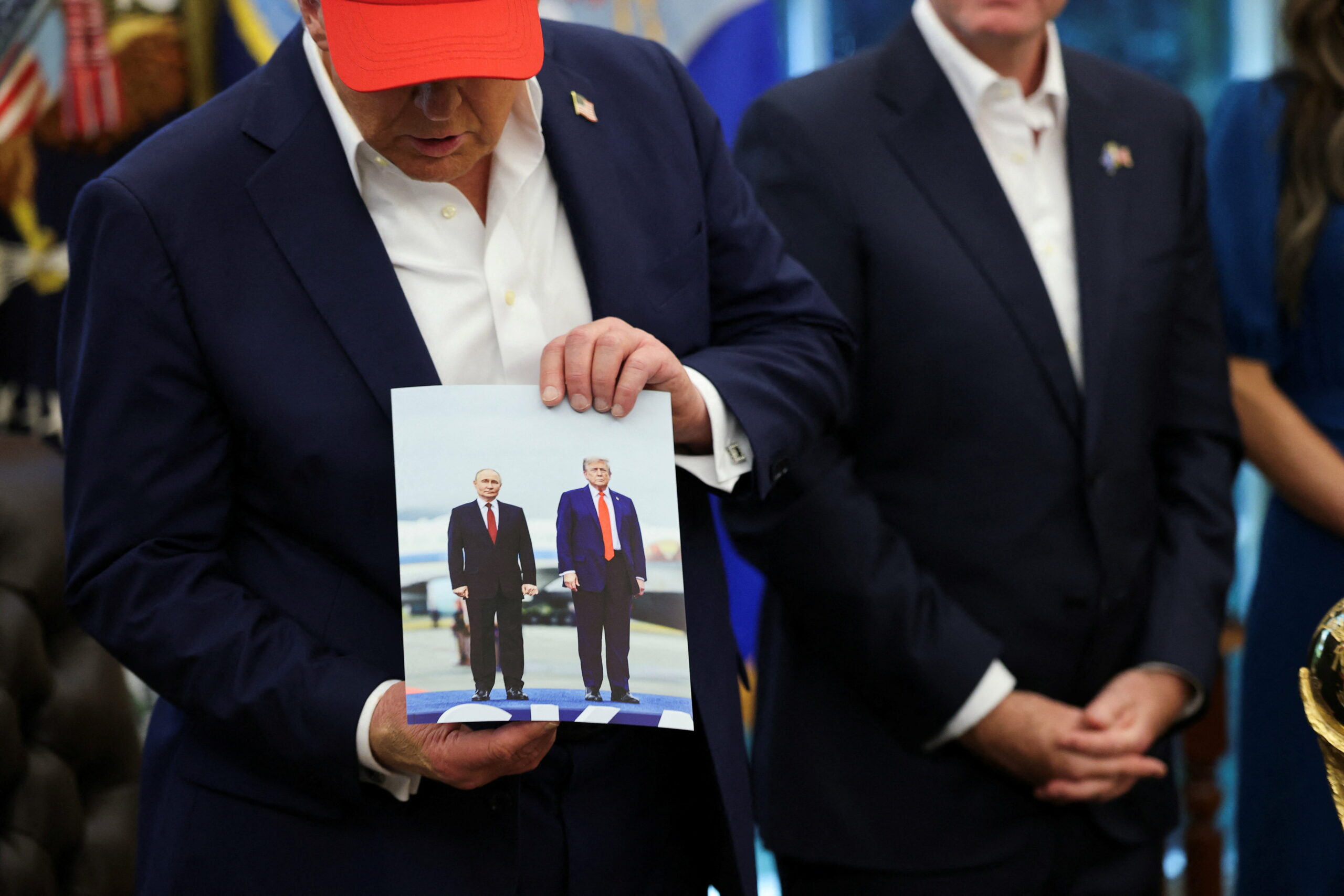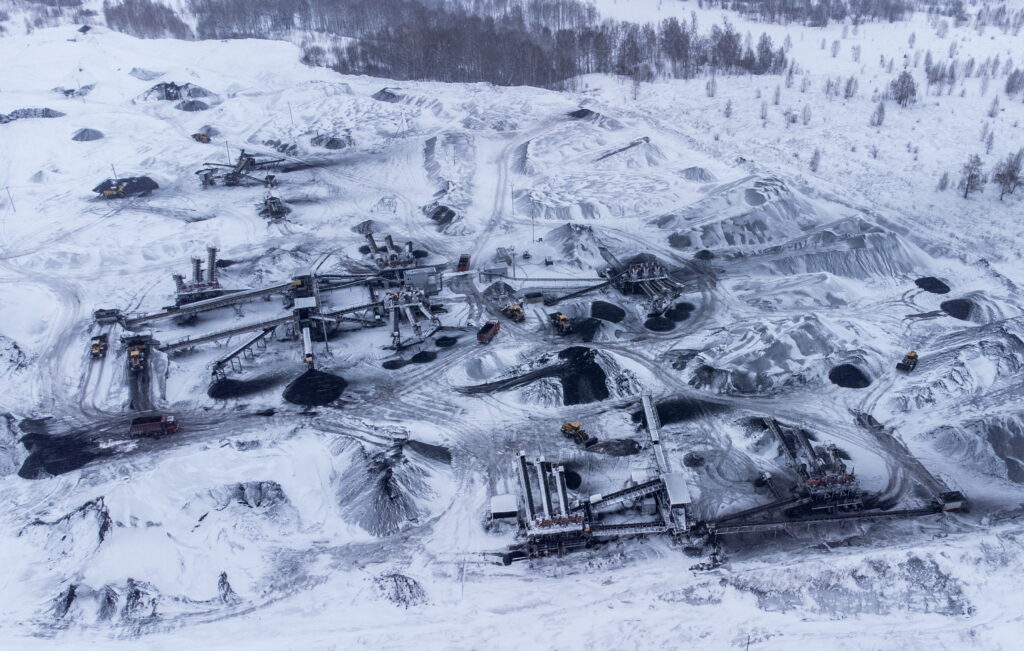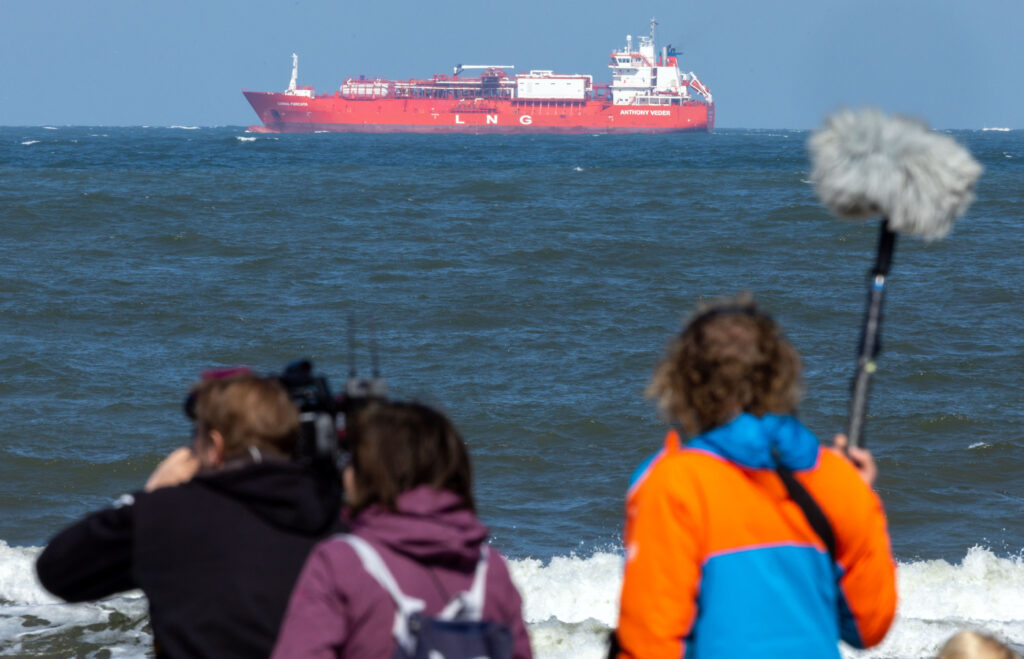Despite Russia being the most sanctioned country in the world, its hydrocarbon export sector has been doing quite well recently. In 2024, Russia’s oil and gas revenues increased by 26%, reaching nearly a record high of 11.1 trillion rubles. However, in 2023, oil and gas revenues for the Russian budget decreased by 24% due to falling oil prices and a drop in gas exports. In 2024, oil and oil products accounted for exactly a quarter of Russia’s federal budget revenues, with gas contributing another 5%.
The Russian budget received more from oil and gas sales only in 2022 — 11.5 trillion rubles. At that time, oil prices soared first due to expectations and then due to the start of Russia’s full-scale invasion of Ukraine. For example, the price of Russian Urals crude oil was above $ 80 per barrel for several months in 2022.
According to the IEA, in January 2025, oil production in Russia even slightly increased compared to December 2024 — from 9.12 to 9.22 million barrels per day. Also, in January 2025, Russia’s revenue from oil and oil product exports increased by $ 900 million (90 billion rubles) compared to December, reaching $ 15.8 billion (1.6 trillion rubles). The volume of oil and oil product exports did not change, but the average price per barrel of Russian oil exceeded the $ 60 per barrel price cap.
The Price Cap on Oil Has Virtually Stopped Working
All this indicates that the sanctions against Russia’s energy sector, which were the most extensive as of early 2025 — an embargo on maritime shipments of oil and oil products to the EU, G7 countries, and Australia, along with the price cap — are no longer significantly affecting either Russian oil prices or budget revenues from oil.
The price cap on Russian oil was set by the EU, G7 countries, and Australia on December 5, 2022, coinciding with the introduction of an embargo on Russian oil sea shipments. Under the cap’s terms, Western carriers, insurers, etc., can only work with Russian oil destined for third countries if it is sold below $ 60 per barrel at the port of loading. From February 5, 2023, a similar embargo and price caps were introduced for Russian oil products: $ 100 per barrel for premium products (like diesel) and $ 45 per barrel for products traded at a discount to crude oil (like fuel oil, naphtha, etc.).
These actions were aimed at reducing Russia’s income from oil and oil product exports (and thus reducing the Kremlin’s capacity to continue the war in Ukraine) while maintaining the volume of Russian oil on the world market, which was crucial to prevent new spikes in oil prices. Price caps could be adjusted (particularly lowered), but in practice, they have not been revised due to fears of rising global oil prices.
Initially, price caps significantly reduced Russia’s oil revenues. For example, according to CREA estimates, in the first year of the embargo and price caps, Russia lost about 23% of its monthly income from Urals crude oil exports. However, by the second year, this figure dropped to 9%. The reason is that Russian exporters began widely using a shadow fleet — old tankers owned by companies with complex ownership and management structures, often with dubious insurance, using various risky tactics to conceal the origin of their cargo, such as ship-to-ship transfers at sea, turning off Automatic Identification Systems (AIS), providing false data, etc.
To weaken the Russian shadow fleet and prevent potential softening of sanctions by a new President Donald Trump, on January 10, 2025, the outgoing Joe Biden administration significantly tightened sanctions against Russia’s energy sector (including shadow fleet oil tankers) and protected them from possible easing by Trump.
Biden’s Farewell Sanctions
Sanctions were imposed on several structures of Russia’s largest oil company, Rosneft (specifically, the Arctic project «Vostok Oil»), which accounts for about 40% of the country’s total production, as well as Gazprom Neft and Surgutneftegas, their subsidiaries, dozens of oil trading and insurance companies, and 184 vessels of the Russian shadow fleet, most of which are oil tankers.
The Biden administration also introduced new restrictions on nearly a hundred individuals from previous sanction lists. Now, to lift the measures against them, Congressional approval is required. However, it’s quite possible that easing sanctions against Russia might not be in Trump’s interest yet, as he aims to end the war in Ukraine. Trump has promised that if Russia is not ready to negotiate, the sanction lists will grow.
Russian exporters have a slight grace period: sanctioned tankers can unload Russian oil at their destination until February 27, and financial transactions must be completed by March 12. For this reason, the full picture of how U.S. sanctions have impacted is not yet clear. However, some important conclusions can already be drawn.
New American Sanctions Begin to Have an Impact
The new U.S. sanctions have not yet caused the oil price spikes that Western countries feared. Indeed, it was due to these fears that many EU countries did not support a significant tightening of sanctions against Russian oil. The price of Brent crude rose from $ 77 per barrel the day before the U.S. sanctions announcement (January 9) to $ 82 per barrel on January 15, but by early February, it had dropped to $ 74 per barrel. Meanwhile, the price of the main Russian oil grade, Urals, fell below the $ 60 per barrel price cap in early February. Thus, discounts on Russian oil increased to $ 15−16 per barrel — the highest since May of the previous year. Before the full-scale war began, these discounts usually did not exceed $ 2−3 per barrel.
Another significant effect of the new U.S. sanctions, already noticeable, is the halt of several vessels from the U.S. sanctions list. Specifically, about 60% of the active tankers (94 tankers) listed on January 10 in the U.S. blacklist have ceased operations. Many tankers that were transporting Russian oil are now drifting and are de facto being used as oil storage. To understand the implications, one can look at previous experience: 33 out of 39 tankers from Russia’s shadow fleet sanctioned by the U.S. from October 2023 to January 2025 (i.e., before the latest round of sanctions) were completely taken out of service.
It’s possible that Russian oil exporters have already faced problems in early February. According to Bloomberg, from February 2 to 9, Russia managed to load oil onto 21 tankers, compared to 29 the previous week. Export deliveries from February 2 to 9 significantly decreased both in physical (down to 2.3 million barrels per day, 25% lower than the previous week) and monetary terms (down to $ 990 million, 28% lower than the previous week), reaching a low not seen since December 2022. This is linked both to Russia avoiding loading sanctioned tankers, at least in key Baltic Sea ports, and due to a severe storm in the port of Kozmino (Primorsky).
Theoretically, Russia could reduce raw oil exports and increase refining volumes. Russian Deputy Prime Minister Alexander Novak announced intentions to ramp up refining in 2025. However, this is problematic due to constant drone attacks from Ukraine. According to Reuters estimates, from January to early February 2025, drone attacks have taken out about 10% of Russia’s refining capacity. Additionally, Russian oil storage capabilities are limited and also under attack.
China, India, and Turkey Will Not Risk
In 2021, the EU was the largest buyer of Russian oil and oil products — accounting for nearly half of Russian exports. However, due to the embargo on Russian oil and oil products by sea, EU purchases from Russia fell by almost nine times by 2024. China, India, and Turkey were the largest buyers of Russian oil and oil products in 2023−2024, now accounting for about 70% of Russian exports, and they saved Russian oil exports from collapse after the EU embargo.
However, these countries are evidently not ready to play with the new U.S. sanctions. The Indian government has stated that it will not allow sanctioned tankers into its ports after February 27. China and Turkey are also cautious about sanctioned tankers.
According to current estimates, India is short by about 14% in its oil import plans for March. Indian counterparts still hope to secure supplies of cheap Russian oil. Notably, before the Russian invasion of Ukraine, India bought only a few percent of its imported oil from Russia, but in 2024, this rose to about a third. And returning to buying more expensive Middle Eastern oil is not desired. However, Indian oil refiners and banks must reckon with U.S. sanctions, as they use Western financial markets.
Chinese oil refiners are cutting back on Russian crude oil purchases even faster than Indian ones. It’s expected that in February, China’s import of Russian crude will almost halve to 500,000 barrels per day, compared to an average of 1.05 million barrels per day in the previous three months. China is replacing Russian supplies with those from Angola and Brazil.
Russian Arctic Ambitions Under Threat
Particularly hard hit might be Russian Arctic oil projects. All their production is currently for export, with no logistical capabilities to supply Arctic oil to Russian refineries. At least 15 tankers under U.S. sanctions were carrying Arctic oil. Additionally, oil shipments from Arctic ports and Sakhalin require specialized tankers capable of operating in harsh conditions. Finding replacements for sanctioned tankers will be extremely challenging.
Also under sanctions is Rosneft’s flagship project, «Vostok Oil,» which was considered one of the most promising hydrocarbon projects in Russia’s Far North. The project unites major fields in the north of Krasnoyarsk Krai. It was planned that «Vostok Oil» would start production in 2024, initially at 30 million tons per year, increasing to 100 million tons per year by 2030, which would be roughly a fifth of Russia’s current oil production. This project has already suffered significantly from Western sanctions, including technological ones, and the commissioning of its first phase was postponed from 2024 to 2026.
Hope on New Old Intermediaries
Russia’s ability to avoid or at least minimize the anticipated drop in oil exports from March 2025 depends on whether it can rebuild new supply schemes before March: exporters, insurers, and tankers must not be on the U.S. blacklist, and there must be a way to conduct payments. Of course, many participants in these chains have not yet been affected by U.S. sanctions. Moreover, new market players are being hastily registered. In particular, new intermediaries are appearing on the market, backed by old intermediaries from sanctioned companies.
Much depends on whether the U.S. will continue to expand its sanction lists at the pace it did in January 2025. Another good question is whether Europe will finally decide to lower the oil price cap to put additional pressure on Russia’s budget revenues (a third of which goes to the war in Ukraine). Two days after the U.S. sanctions were announced, six EU countries — Sweden, Denmark, Finland, Latvia, Lithuania, and Estonia — called on the European Commission to lower the price cap on Russian oil to reduce Kremlin’s income. According to CREA estimates, a price cap of $ 30 per barrel would reduce Russia’s January oil export revenue by 23%.
Over time, Russia will find ways to adapt to the Biden administration’s farewell sanctions, although it is highly likely that it will have to reduce oil production in the near future. However, if Western countries continue to actively tighten sanctions, adaptation will become increasingly costly for Russia.










